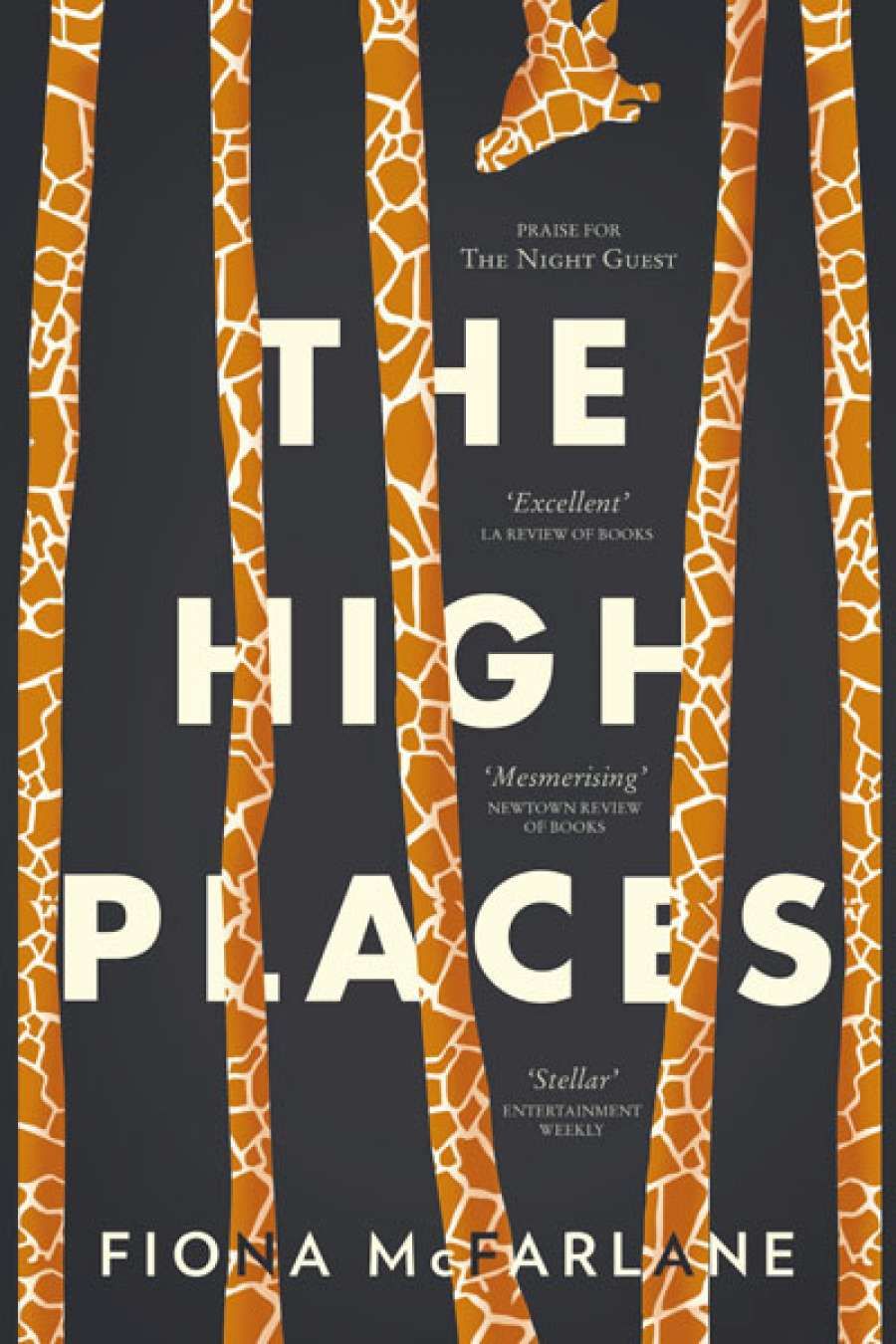
- Free Article: No
- Contents Category: Fiction
- Custom Article Title: Sarah Holland-Batt reviews 'The High Places' by Fiona McFarlane
- Book 1 Title: The High Places
- Book 1 Biblio: Hamish Hamilton, $32.99 pb, 275 pp, 9781926428567
Throughout The High Places, McFarlane confronts the reader with similar excesses of belief: we meet a budgerigar whose owner is convinced it is a mechanical automaton, a town in the grip of collective nostalgic mania wrought by having been movie extras in an historical film, and a group of schoolchildren whose mystical belief in the power of a talismanic button in a schoolyard game turns them into a lynch mob. Both collective and individual delusions assail McFarlane's characters – delusions about the nature of marriage, about God, about faith, about their romantic partners and family members, and, above all, about their agency over their lives. As in her memorable début novel, The Night Guest (2013), the reader's credulousness becomes an active force in the narrative; we are implicated in these manias and fantasies, whether as sceptics or as adherents.
One recurring source of damaging fantasy for McFarlane's characters is the institution of marriage. 'Art Appreciation' and 'Exotic Animal Medicine' – both set just on and after the cusp of marriage – dwell on the gaps of subjectivity that persist between husband and wife; once McFarlane's characters marry, they drift further away from the fixed, stable ideas they have held about one another, and retreat into the reserves of their interior lives. In the dark, wry 'Mycenae', a pair of couples travel to Greece, only for secrets, deceptions and insecurities to emerge beneath the surface of 'model' marriages. Many of McFarlane's stories centre on characters suffering from crises or surpluses of faith that have brought them to the brink of madness. In addition to Dr Birch, we meet an agnostic, drought-stricken farmer who is driven to pray for rain in the titular story, and who is haunted by a visitation of all the sheep he has had to cull over the years, and his disturbed and fervent son, who sees miracles and signs everywhere, and who leads his desperate father to make a brutal sacrifice. In the haunting 'Man and Bird', we follow the woes of a reverend who has become besotted with an ordinary cockatoo, whose crest like a 'Pentecostal lick of yellow flame' comes to accompany him everywhere, evidence that the bird is a messenger of God; the story abandons us, as the congregation abandons its reverend, to watch the bird's final solo ascent towards the coast, illuminated in a mock-epiphanic shaft of light.
'The reader's credulousness becomes an active force in the narrative; we are implicated in these manias and fantasies, whether as sceptics or as adherents'
While the stories in The High Places are imaginative, playful, and intellectually sophisticated, it is no overstatement to suggest that their power resides in the authority of McFarlane's style, not just in her ideas. McFarlane's sentences fizz with imagery and exhibit a highly poetic sense of cadence and rhythm. Her settings – particularly her descriptions of harbour-side Sydney – are mythic, dreamlike, as are the repeated incursions of exotic animals into her stories. She frequently adopts a wistful, fable-like tone that borders on nostalgia, only to undercut the fantasy with juxtaposition, as she does in 'Rose Bay': 'Rose left work with the other girls, typists and stenographers and telephonists, all trim and efficient with busy plans and singsong weekend voices. Susan and the children seemed diminished by comparison.'
Throughout the collection, McFarlane's narrative stance is carefully calibrated; her humour is benevolent rather than cruel, despite the often absurd circumstances of her characters. The resultant voice is difficult to parse – highly assured, comic but kind, an effervescent admixture of fable, magic realism, and irony. Impressively, the stories resist closure, opening out into more questions than answers; they are constitutionally agnostic, despite their keen interest in belief. Finishing this remarkable collection, the image that lingers with me is that of Mabel, the emancipated colossal squid, flying seaward, 'holy and beautiful, a bony-beaked messenger bringing no news'.
The High Places will be published by Hamish Hamilton on 1 February, 2016.


Comments powered by CComment